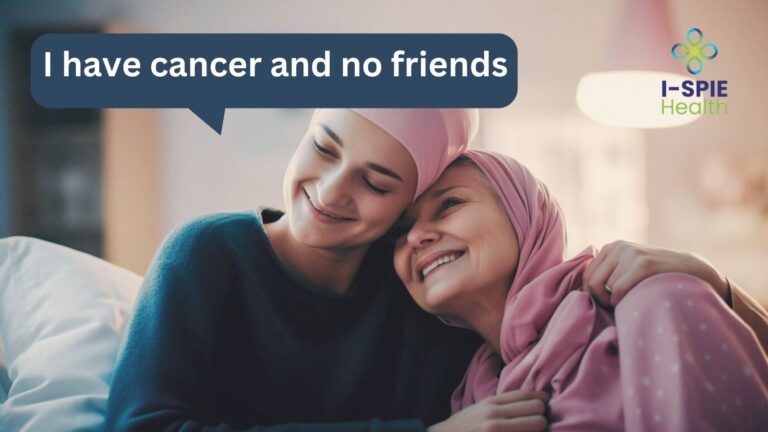Cancer treatment has made remarkable strides in recent years, with Targeted Therapy vs. Immunotherapy emerging as one of the most promising approaches. Both methods have transformed how we treat various types of cancer, offering new hope to patients worldwide.
This blog aims to delve into the intricacies of targeted therapy and immunotherapy, comparing their mechanisms, benefits, and effectiveness to help you better understand these advanced treatments.
What is Targeted Therapy?
Targeted therapy is a type of cancer treatment that uses drugs or other substances to precisely identify and attack cancer cells, usually while doing little damage to normal cells. It works by targeting specific molecules involved in the growth, progression, and spread of cancer.
Targeted therapy interferes with cancer cell proliferation and survival by targeting specific genes and proteins. For example, certain targeted therapies can block the action of specific enzymes or growth factor receptors (like HER2 or EGFR) involved in cancer cell signaling pathways.
These therapies can also include angiogenesis inhibitors that prevent the formation of new blood vessels that tumors need to grow.
Types of Targeted Therapy
- Small Molecule Inhibitors: These are small enough to enter cells easily and can block the activity of enzymes or proteins inside the cancer cells.
- Monoclonal Antibodies: These are designed to attach to specific targets found on cancer cells. Once attached, they can kill the cancer cells, block their growth, or prevent them from spreading.
Benefits
- Precision: By targeting specific molecules involved in cancer, these therapies can be more effective and less harmful to normal cells.
- Fewer Side Effects: Targeted therapies generally have fewer and less severe side effects compared to traditional chemotherapy because they specifically target cancer cells.
How it Works:
Targeted therapy uses drugs or other substances to precisely identify and attack specific molecules (usually proteins) involved in the growth, progression, and spread of cancer cells. These targets are often proteins that are mutated or overexpressed in cancer cells.
Targeted therapies can block the action of these molecules, inhibit cancer cell growth, or induce cancer cell death. Common types include small molecule inhibitors and monoclonal antibodies.
Side Effects:
- Skin Problems: Rashes, dry skin, and acne-like conditions.
- Liver Problems: Elevated liver enzymes indicate liver inflammation or damage.
- High Blood Pressure: Increased blood pressure due to vascular effects.
- Diarrhea: Gastrointestinal disturbances are common.
- Fatigue: General tiredness and lack of energy.
- Blood Clots and Bleeding: Increased risk of thrombosis or bleeding
What is Immunotherapy?
Immunotherapy is a type of cancer treatment that helps your immune system fight cancer. The immune system helps your body fight infections and other diseases. It is made up of white blood cells and organs and tissues of the lymph system.
Immunotherapy stimulates or enhances the body’s natural defenses to fight cancer. It can also stop or slow the growth of cancer cells, prevent cancer from spreading to other parts of the body, and help the immune system destroy cancer cells more effectively.
Types of Immunotherapy
- Checkpoint Inhibitors: These drugs help the immune system recognize and attack cancer cells.
- Adoptive Cell Transfer: This boosts the natural ability of T cells to fight cancer.
- Cancer Vaccines: These vaccines boost the body’s natural defenses against cancer.
- Monoclonal Antibodies: In the context of immunotherapy, these antibodies can mark cancer cells so that they will be better recognized and destroyed by the immune system.
Benefits
- Long-term Remission: Some immunotherapy treatments can provide long-term protection against cancer, even after the treatment has ended.
- Broad Application: Immunotherapy can be effective against a variety of cancers, including those that are resistant to other treatments.
- Systemic Approach: Immunotherapy can target cancer cells throughout the body, making it effective for metastatic cancer.
How it Works:
Immunotherapy harnesses the body’s immune system to fight cancer. It boosts the natural defenses to recognize and attack cancer cells more effectively.
Types of immunotherapy include checkpoint inhibitors, which block proteins that prevent immune cells from attacking cancer, and CAR-T cell therapy, which modifies a patient’s T cells to target cancer cells better. Other forms include cancer vaccines and monoclonal antibodies used to mark cancer cells for immune destruction.
Side Effects:
- Immune-Related Side Effects: Inflammation of healthy tissues, leading to conditions such as colitis, pneumonitis, hepatitis, and endocrinopathies.
- Flu-like symptoms: Fever, chills, weakness, dizziness, and body aches.
- Fatigue: Severe tiredness and low energy levels.
- Skin Reactions: Rashes, itching, and vitiligo.
- Diarrhea and Gastrointestinal Issues: Similar to those seen with targeted therapies.
- Infusion Reactions: Reactions at the site of infusion, including pain, swelling, and redness.
Also Read: Immunotherapy Vs. Chemotherapy: The Detailed Comparision
Quick Comparison: Targeted Therapy Vs. Immunotherapy
| Feature | Targeted Therapy | Immunotherapy |
|---|---|---|
| Mechanism | Targets specific molecules in cancer cells | Boosts the immune system to fight cancer |
| Specificity | High specificity to cancer cells | Broader immune system activation |
| Side Effects | Generally, fewer and less severe | Can include immune-related side effects |
| Personalization | Based on genetic markers | Based on immune profiling |
| Types | Small molecule inhibitors, Monoclonal antibodies | Checkpoint inhibitors, CAR-T cells, Cancer vaccines, Monoclonal antibodies |
| Effectiveness | Depends on specific cancer mutations | Effective for various cancers |
| Cost | Often high but varies | Generally high but varies |
| Availability | Widely available for many cancers | Increasing availability for various cancers |
Comparing Targeted Therapy and Immunotherapy
Mechanisms: Targeted therapy focuses on specific genetic mutations and cellular processes that drive cancer growth. It uses drugs designed to block these specific pathways. In contrast, immunotherapy leverages the body’s immune system, enhancing its ability to recognize and destroy cancer cells. While targeted therapy acts directly on cancer cells, immunotherapy empowers the immune system to do the work.
Effectiveness: The effectiveness of targeted therapy largely depends on the presence of specific molecular targets in the cancer cells. For example, HER2-positive breast cancers respond well to HER2 inhibitors. Immunotherapy, on the other hand, has shown effectiveness across a broader range of cancers, including melanoma, lung cancer, and certain types of lymphoma. However, its success can be unpredictable and varies from patient to patient.
Side Effects: Targeted therapies often have fewer and less severe side effects compared to traditional chemotherapy because they specifically target cancer cells. However, they can still cause side effects like skin problems, liver issues, and high blood pressure. Immunotherapy can cause immune-related side effects, such as inflammation and autoimmune reactions, which can affect various organs and systems in the body.
Personalization: Both targeted therapy and immunotherapy can be personalized. Targeted therapy is typically personalized based on the genetic profile of the tumor, identifying specific mutations or aberrations that can be targeted. Immunotherapy personalization often involves profiling the immune system and the tumor microenvironment to predict which patients are most likely to benefit.
Cost and Accessibility: Both therapies can be expensive. Targeted therapy costs vary depending on the specific drug and treatment regimen. Immunotherapy is also costly, particularly newer treatments like CAR-T cell therapy. However, both treatments are becoming more accessible as they are increasingly covered by insurance and as more generic and biosimilar drugs become available.
Case Studies
Case Study Of Targeted Therapy
- Patient Profile: A 45-year-old woman with HER2-positive breast cancer.
- Diagnosis and Treatment: Diagnosed with HER2-positive breast cancer, she was treated with trastuzumab (Herceptin), a monoclonal antibody that targets the HER2 receptor.
- Outcome: After six months of targeted therapy, her tumors shrank significantly, and she achieved partial remission. Her treatment continues to be effective, with manageable side effects.
Case Study Of Immunotherapy
- Patient Profile: A 60-year-old man with metastatic melanoma.
- Diagnosis and Treatment: Diagnosed with advanced melanoma, he was treated with pembrolizumab (Keytruda), a checkpoint inhibitor that blocks the PD-1 protein on immune cells.
- Outcome: After one year of treatment, his tumors have disappeared, and he is in complete remission. He experienced some immune-related side effects, which were managed effectively.
Future Directions
Ongoing research is focused on improving both targeted therapy and immunotherapy. Advances in genomics and proteomics are helping identify new targets for therapy. Additionally, research into the tumor microenvironment and immune evasion mechanisms is paving the way for more effective immunotherapies.
Combining targeted therapy and immunotherapy is an exciting area of research. These combinations can potentially enhance the effectiveness of treatment by simultaneously targeting cancer cells directly and boosting the immune response. Clinical trials are ongoing to determine the best combinations and treatment protocols.
Patients’ experiences are crucial in understanding the real-world impact of these therapies. Patient advocacy groups and support networks play a vital role in providing information, emotional support, and resources for those undergoing treatment. Sharing patient stories helps others make informed decisions about their care.
Confused About Targeted Therapy Vs. Immunotherapy?
Explore the differences between targeted therapy and immunotherapy to find the best approach for your treatment. Learn from our experts how these innovative therapies can offer personalized solutions for your health journey.
Conclusion
Both targeted therapy and immunotherapy represent significant advances in cancer treatment. While they differ in their mechanisms, effectiveness, side effects, and personalization, each offers unique benefits that can be life-saving for cancer patients.
As research continues to evolve, these therapies will likely become more effective and accessible. Personalized medicine, which tailors treatment to the individual characteristics of each patient and their cancer, is the future of oncology.
FAQ
How does targeted therapy work?
Targets specific cancer cell abnormalities to stop growth and spread.
How does immunotherapy work?
Boosts the immune system to fight cancer cells.
Can I receive both targeted therapy and immunotherapy?
Yes, depending on cancer type and stage, both treatments might be combined.
Are there side effects to targeted therapy and immunotherapy?
Both treatments can cause side effects, but they vary depending on the specific drug and patient.








One Comment